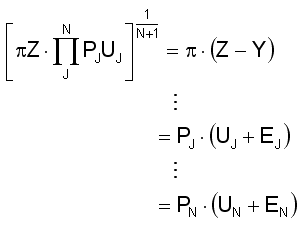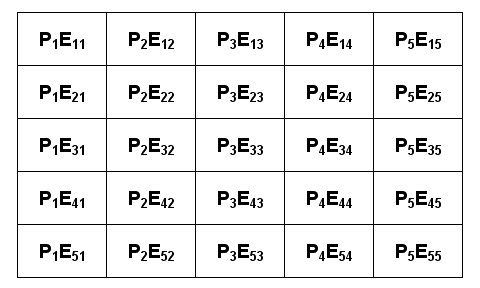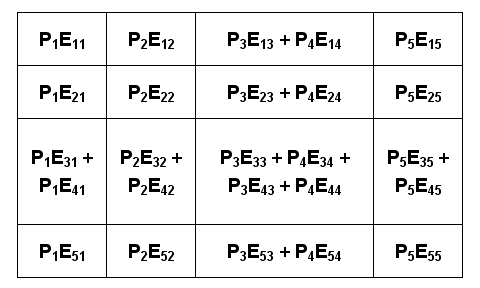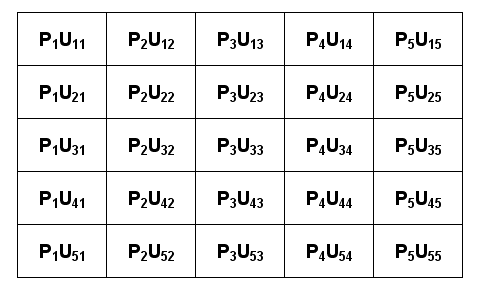In using hyperbolae as the exclusive descriptors of technical indifference, SFEcon places these
forms at the center of economic analysis. When applied to the fundamental economic problem of discerning
the economic optimum among technical optima, a financial discriminant z emerges in
the solution. Hyperbolic systems of indifference proclaim optimality for an economic sector by equality
among the many expressions of z shown here below:

Each of these terms measures z in a different way. If economic dynamics are properly perceived as organizing around the general optimum, then z would be to the operations of an economic sector what the golden mean is to the proportions of a rectangle, viz.: a number that is ubiquitously in evidence upon recurrence of a uniquely defined state.
When all sectors composing an economic system’s input/output context succeed in uniting all measures of their respective z’s based on one and the same vector of prices, the system has exhausted its potential for adjustment. Thus descriptions of economic sectors in terms of their z values are simple, operative for any economic state, and therefore potentially serviceable in a description of how stability is maintained as the economy finds its way through all the chaotic states leading toward the general optimum.
However our our input/output context might be segmented by sector and commodity, we can be sure that one and the same whole of economic activity is spanned by the segmentation. An elementary example of re-segmenting an I/O structure might start with the following 5x5 matrix of monetary flows, given by prices P times physical rates of exchange E:
 Fig. 1
Fig. 1
If we wish to consolidate Sectors 3 and 4 in a different expression of the same realities portrayed above, logic would dictate the following result:
 Fig. 2
Fig. 2
The utility parameters upholding these two matrices also express one and the same reality as to the ways in which economic goods might be combined into outputs according to the technologies available at a given moment. If we presume to know the optimal utility set for Figure 1 . . .
 Fig. 3
Fig. 3
what then do we know about the utility set corresponding to Figure 2? A glance back to the equations for z shows that we know almost everything:
 Fig. 4
Fig. 4
Figure 4 shows us that utility parameters outside the consolidation do not change; and further consultation with the equations above reveals that the z’s of the unconsolidated sectors do not change either. Moreover, the z of the new consolidated sector sums the z’s of the sectors consolidated. In all it would seem that . . .
1. Our presumption of general optimality, revealed through hyperbolic functions, implies the existence of an ultimate parametric set based on an infinitely fine-grained description of an economy’s technical potential; and
2. In computing utility parameters of sectors chosen for our analytic convenience, we are merely adding together selected elements of this infinitely fine mesh.Since all the elements of our hypothetical ultimate parametric set are represented in any segmentation of the economic whole, we can be sure that one and the same technical potential is represented by any economic model tethered to optimality and referencing hyperbolic utility parameters.
If economic calculations are to reference the singular reality of technical potential that can exist at a single time, then nothing less should be demanded of our parametric description of underlying economic reality. In closing, we note that this elementary requisite has yet to find application among economics’ more familiar descriptions of technical potential.